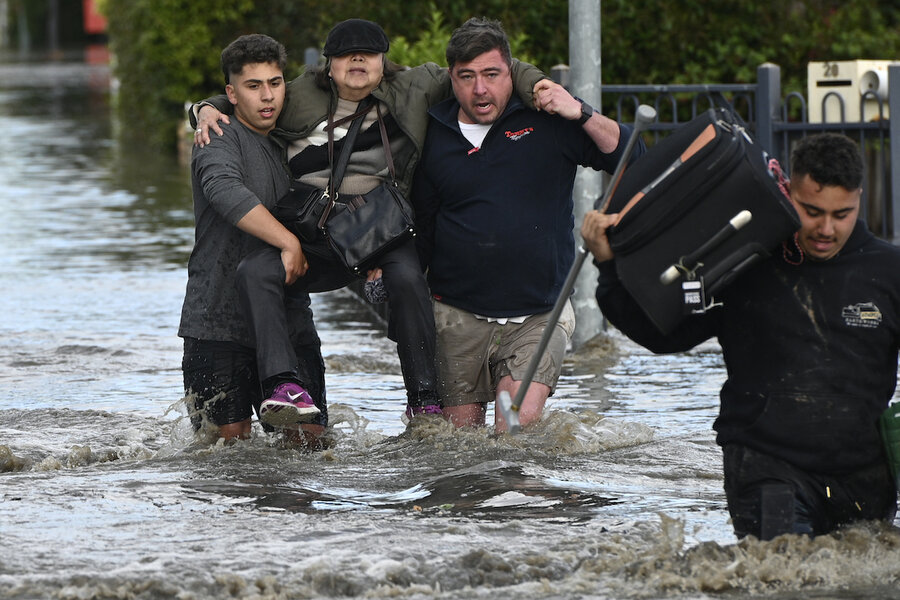Down Under submerged as record floods engulf Victoria
Loading...
| Sydney
Thousands of people across Australia’s southeast were asked to evacuate their homes on Friday, including some in Melbourne’s west, after two days of incessant rains triggered flash flooding and fast-moving waters burst river banks.
Large parts of Victoria state, southern New South Wales, and the northern regions of the island state of Tasmania were pounded by an intense weather system with some taking more than a month’s worth of rain since late Wednesday, officials said.
“[This] has led to widespread, major flooding ... with some rivers experiencing record flooding and this is only going to continue to move downstream and get worse,” Bureau of Meteorology forecaster Dean Narramore told ABC television.
Footage on social media showed people wading through knee-deep water with their pets and some being rescued in boats.
Many rivers in Victoria, including the Maribyrnong in Melbourne’s west and the Goulburn further north, reached major flood levels, prompting the nighttime evacuation of residents.
The Goulburn River at Seymour, about 100 km (62 miles) north of Melbourne, has peaked above the record 7.64 meters (25 ft) reached in May 1974, data showed.
“It’s far from over, we’ll see waters rise,” Victoria Premier Daniel Andrews told the ABC. “We’ll see more and more waters continuing to rise, more and more houses being inundated, more and more communities being closed off.”
Most of the state was experiencing a “very, very, significant rainfall event and it comes, of course, with the ground completely sodden,” Mr. Andrews said.
“The real challenge now is we’ve got another rain event next week and the Bureau [of Meteorology] forecasting more rain throughout the next six-to-eight week period and it won’t take a lot of additional water for there to be further flood events,” Mr. Andrews added. “So this has only just started and it’s going to be with us for a while.”
Mr. Andrews said 4,700 homes were without power, more than the 3,500 that Victoria State Emergency Service had reported earlier on Friday.
The Bureau of Meteorology said major-to-record flooding was occurring or was forecast to occur on many rivers in Victoria and the island state of Tasmania to the south.
In Tasmania, the flooding crisis intensified after more evacuation orders overnight, while hundreds of residents in southern New South Wales spent the night in evacuation centers.
Though heavy rains are expected to ease from late Friday, flooding could continue through the weekend, officials said.
Devastating floods have repeatedly struck Australia’s east coast since early last year because of a multi-year La Niña weather phenomenon, which brings more rain.
The bureau forecast that the La Niña event may peak during the current Southern Hemisphere spring and return to neutral conditions early next year.
La Niña is the cooler flip side of the better-known drying El Niño pattern. La Niña occurs when equatorial trade winds become stronger, changing ocean surface currents and drawing up cooler deep water.
It is the third La Niña since 2019 became Australia’s hottest and driest year on record.
That year came to a catastrophic conclusion with wildfires fueled by drought that directly or indirectly killed more than 400 people, destroyed more than 3,000 homes, and razed 19 million hectares (47 million acres) of woods, farmland, and city fringes.
Sydney, New South Wales’ capital and Australia’s largest city, last week beat its 1950 record to make 2022 its wettest-ever year.
This story was reported by Reuters. Material from The Associated Press was used in this report.





